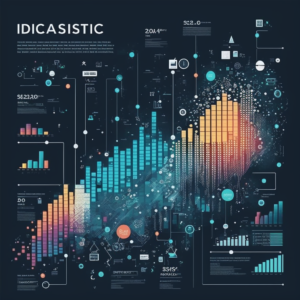Why Data Matters in Content Marketing
In today’s competitive digital landscape, a data-driven content strategy is crucial for success. By leveraging analytics, you can make informed decisions and create content that resonates with your target audience, ultimately driving better results. In this ultimate guide, we’ll explore the essential steps to develop a data-driven content strategy that will help you achieve your marketing goals. Let’s dive in!
1. Understanding the Basics of Data-Driven Content Strategy
Before we dive into the nitty-gritty of data-driven content strategy, let’s cover some essential concepts:
- Data-driven content strategy: A systematic approach to creating, distributing, and optimizing content based on data and insights gained from analytics.
- Analytics: The systematic analysis of data to uncover patterns, trends, and insights.
- KPIs (Key Performance Indicators): Quantifiable metrics used to evaluate the success of a content strategy.
2. Setting Clear Goals and Objectives
The foundation of any data-driven content strategy is a clear set of goals and objectives. Start by asking yourself:
- What do you want to achieve with your content marketing efforts?
- Which KPIs will you use to measure success?
Some common content marketing goals and KPIs include:
- Increase website traffic
- Boost audience engagement
- Generate leads and conversions
- Improve brand awareness

3. Choosing the Right Analytics Tools
To make data-driven decisions, you’ll need the right analytics tools in your arsenal. Here are some popular options:
- Google Analytics: A powerful web analytics tool for tracking website traffic, user behavior, and conversions.
- SEMrush: A comprehensive SEO and content marketing platform for keyword research, competitor analysis, and more.
- BuzzSumo: A tool for discovering the most shared and engaging content across the web, as well as influencer identification.
Pro tip: Combine multiple tools for a more comprehensive view of your data and insights.
4. Collecting and Analyzing Data
Now that you have your goals, KPIs, and tools in place, it’s time to collect and analyze data. Here’s what to focus on:
- Website traffic: Analyze your site’s traffic sources, user behavior, and engagement metrics.
- SEO performance: Track keyword rankings, organic search traffic, and backlinks.
- Social media engagement: Monitor likes, shares, comments, and other engagement metrics across your social channels.
- Content performance: Identify which pieces of content perform best in terms of traffic, engagement, and conversions.
5. Creating a Data-Driven Content Calendar
With your data and insights in hand, it’s time to create a content calendar that reflects your findings:
- Identify high-performing content topics and formats
- Determine the optimal posting frequency and schedule
- Allocate resources for content creation and promotion
- Set deadlines and assign responsibilities to your team
- Continuously update and refine your content calendar based on new data and insights
Pro tip: Use tools like Trello, Asana, or CoSchedule to organize and manage your content calendar efficiently.
6. Optimizing Content for Maximum Impact
Optimizing your content based on data-driven insights can help you achieve better results. Consider the following:
- Optimize headlines for click-through rates (CTR) and SEO
- Improve readability by breaking up text with subheadings, bullet points, and images
- Incorporate relevant keywords without keyword stuffing
- Optimize meta descriptions and alt text for search engines
- Test different CTAs (call-to-actions) to improve conversions
7. Continuous Testing and Iteration
A data-driven content strategy requires continuous testing and iteration. Here’s how to stay on top of your game:

- Conduct regular content audits to assess performance and identify areas for improvement
- Use A/B testing to experiment with different content formats, headlines, CTAs, and more
- Monitor changes in industry trends and audience preferences to stay relevant and ahead of the curve
- Make adjustments to your content strategy based on data and insights, and continue refining your approach
8. Celebrating Success and Learning from Failure
As you implement your data-driven content strategy, it’s essential to celebrate your successes and learn from your failures. This will help you stay motivated, engaged, and ready to tackle new challenges in the ever-changing world of content marketing.
Conclusion: Embrace Data-Driven Content Strategy for Better Results
A data-driven content strategy is crucial in today’s competitive digital landscape. By leveraging analytics and insights, you can create content that resonates with your audience, achieves your marketing goals, and drives better results. So, are you ready to take your content marketing to the next level? Request a consultation to improve your digital marketing or subscribe to our newsletter for more digital updates.








